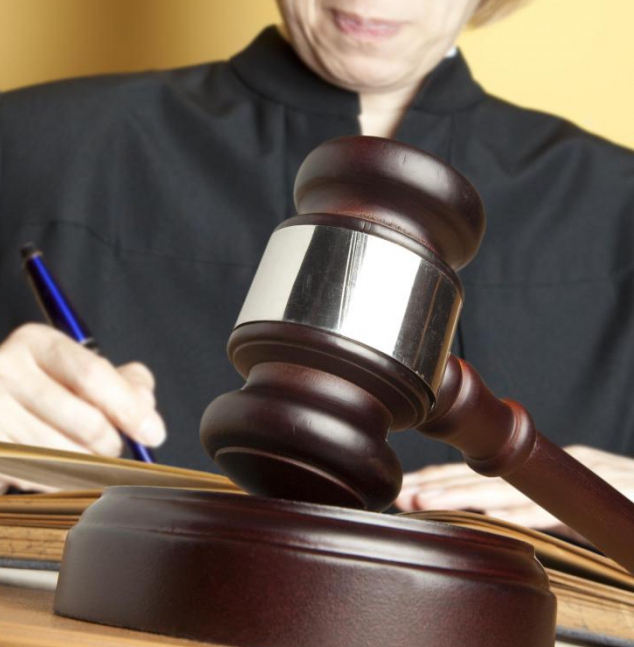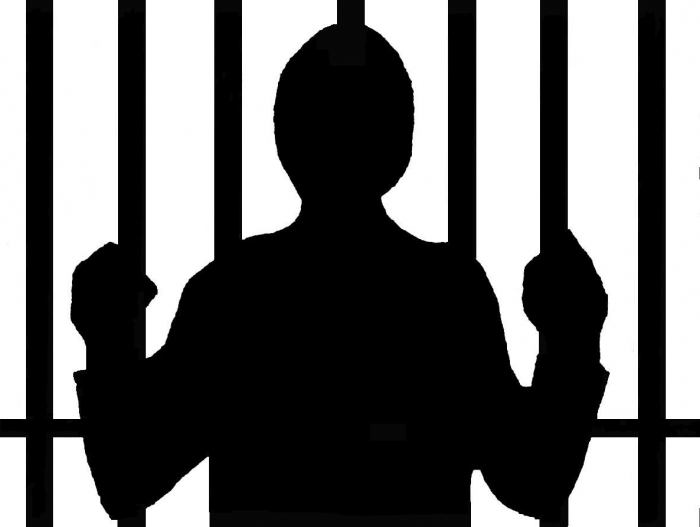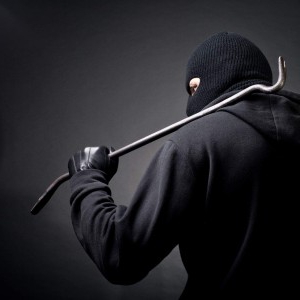This article will examine the objective side of the crime. A definition will also be given of the signs characterizing the external manifestation of a criminal act, the forms and significance of this element for qualifying crimes.
General Provisions

The concept of the objective side of a crime is directly related to the features of the external manifestation of a socially dangerous act. Here, they usually consider such signs as the dangerous acts themselves, their consequences, cause-effect relationships, as well as the place, method, time, situation and tools of the crime.
These elements play an important role for the right qualification, the imposition of a fair sanction, the establishment of the composition, which is the basis for determining criminal liability. If we talk about what the objective side of a crime is, the Criminal Code of the Russian Federation sees it not in the idea itself or in a person’s thought aimed at causing dangerous actions for society, but primarily in a dangerous act, which by its nature violates the established norms of criminal law. This element is considered the main criterion for assessing the goals and intentions of the offender, which is why when investigating crimes, the objective side is the first to be established.
Qualifying Traits

Signs of the objective side of the crime characterize the external side of the dangerous behavior of the subject. The group of such distinctive features includes:
- a causal relationship that has arisen between the consequences and the act;
- time, place, atmosphere in which a dangerous action was committed;
- dangerous consequences expressed in the form of harm;
- a way to carry out an act, means and instrument of commission.
Not all the signs of the objective side of the crime proposed above are basic, most often they play an optional role for qualification. The mandatory attribute of the legislation includes a dangerous action.
The role of the objective side
The importance of the objective side of the crime follows from the role of the corpus delicti. The basis for prosecution is the commission of an act that includes the fundamental characteristics of the composition. Therefore, in order to bring the subject to responsibility, it is necessary to determine the signs of the specific composition of the criminal act.
The objective side of the crime makes it possible to draw a parallel between several adjacent compositions, which, in turn, will allow the authorized person to make a correct assessment of the actions of the offender, thereby determining a fair sentence. For example, bodily harm may entail a wide range of sanctions, which are imposed on the basis of the consequences.
Thus, the value of the objective side is manifested in the fact that:
- firstly, it is expressed in the form of a legal basis for the qualification of a criminal act;
- secondly, it is the basis for establishing criminal liability;
- thirdly, allows to distinguish between similar elements of the composition;
- fourthly, contains a criterion for delimiting an offense from a crime.
Dangerous act - the first sign of the objective side

Mandatory signs of the objective side of the crime are expressed in the form of inaction or action, which are called a criminal act. In the physical sense, the action is expressed by the active behavior of the face.The main feature of the act is its public danger, as well as damage to objects that are under the protection of the law. If actions do not carry public danger, they cannot be considered criminal, and consequently, do not entail criminal liability.
The objective side of the crime, which is expressed in the form of an act, does not always have a criminal sign. Such cases include actions that, because of their insignificance, do not pose a danger to society.
Socially dangerous act - distinctive features
Signs of an objective side corpus delicti determined by a combination of characteristic features and properties of a criminal nature. The act must be unlawful, socially dangerous, strong-willed and conscious. This concept is used in two meanings - narrow and broad sense.
In a narrow sense, this element is a generic form of human behavior. In a broad sense, an act is expressed in an abstract, indefinite form of influence. The unlawfulness of the act is expressed in the fact that a specific inaction or action is prohibited by law under the threat of punishment, and the implementation of such an impact is always considered a violation of the norms of the Criminal Code.
Illegal and dangerous action can be expressed in the form of a sign of the objective side only in case of awareness. This means that the consciousness of the person must embrace the content and nature of public danger. Also, the subject is obliged to realize what exactly his criminal attack is aimed at and what harm he can cause to others.
Illegal Act - Forms

Having determined what signs the objective side of the corpus delicti may possess, it is necessary to pay attention to the distinction between the forms of committing an act.
The legal action is expressed in the form:
- physical impact on tangible objects or a person (for example, theft of property, murder);
- verbal or written motivation of a person to act (for example, insult, slander).
Inaction is a passive form of human behavior, which should have an unlawful, strong-willed, conscious and socially dangerous character. This element of the composition acquires the significance of criminal law only if there are certain signs for which it is necessary to determine:
- the real possibility of a specific action;
- what exactly is the inaction manifested in, what kind of action was not committed by the person;
- that the person was obliged to take any action in order to prevent the onset of negative consequences.
The obligation to act in a certain way arises in the presence of the following circumstances:
- position or profession (for example, when the doctor is obliged to provide assistance to the patient, and as a result of failure to fulfill direct duties, the patient’s health was damaged);
- direct indication of a by-law or law;
- norms of law and morality;
- obligations that were accepted under the contract;
- obligations to perform certain actions in relation to a specific person.
Dangerous consequences - the second sign

The objective side of the crime includes socially dangerous consequences, by which it is customary to understand the harm done to relations protected by criminal law.
The effects are classified as follows:
- moral;
- property;
- physical.
Criminal law implies crimes with formal and material elements. Such a separation of them provides a prerequisite for determining the moment of completion of a specific criminal act. In the first case, it is considered completed after the actual action has been taken, regardless of the consequences.In the second case, the presence of the finished composition is interrelated with the onset of specific negative consequences.
For example, a murder is qualified as a finished action only after the death of the victim. If the death of the person has not occurred, the crime is regarded as an attempt on life.
Types of consequences
There are two groups of consequences:
- Intangible.
- Material.
The last element is expressed as property damage and harm to the health and life of a citizen. Intangible consequences may be associated with the violation of the activities of enterprises, public order, dignity and honor of citizens.
Causal relationship
The objective side of the crime is a causal relationship, which is manifested in the relationship between consequences and action. A causal relationship is expressed in a process that takes place over time. The first criterion for causation is the time sequence of the act and the consequences. In order for inaction or action to be recognized as the cause of a dangerous consequence, it is necessary to determine whether the act preceded the ensuing consequence and whether it threatened its occurrence.
There are these types of causal relationships:
- Mediated and direct.
- Complex and simple.
- Branched and straight.
Rules for establishing a link between a consequence and an action
- It is necessary to determine whether the inaction or action of the subject was the condition and cause of the onset.
- The objectivity of communication implies its investigation regardless of the form of guilt.
- To begin with, the presence of an objective connection between the consequence and the action is ascertained, and only then is the fault established.
- It is necessary to establish legitimacy or immorality as the main condition for the onset of consequences.
- The action of the subject should be antisocial in nature.
Optional signs of the objective side of the crime

These conditions should include:
- Time.
- A place.
- The way.
- Circumstances.
- Means and tools.
Suggested items are not included in all formulations. The optional features of the objective side of the crime have their own individual characteristics and characteristics, which must be understood separately.
- Time is a certain period during which a crime has occurred. The Criminal Code of the Russian Federation rarely indicates such a constructive feature. Usually he is present when it comes to crimes committed while serving a sentence or serving.
- Crime scene - a certain territory on which an unlawful act occurred. The territory of the state has criminal legal significance, since taking into account this fact the issue of jurisdiction is being decided.
- Tools and weapons - substances, objects with which the crime was carried out. These include master keys, weapons, poisons, documents. It is necessary to establish the line between the tool and the tool for the implementation of qualifications.
- Furnishings - certain conditions in which a crime is carried out. This symptom is associated with circumstances aggravating and mitigating punishment.
- Method - methods and techniques that are used by the perpetrators to commit a crime. Also, the method can distinguish between similar offenses (for example, forms of theft: robbery and theft).
Thus, optional features may act as:
- qualifying signs for the offense;
- mandatory signs;
- aggravating or mitigating punishment circumstances.
Conclusion
The criminal legislation of the Russian Federation recognizes as a crime that type of act that violates the established norms of law. In a judicial review or investigation of a case, the objective side must be established for a start, and only after that, on its basis, is the subjective side.
The signs of the objective side include the act, causal relationship and consequences between these two elements. Optional signs are expressed in the form of time, place, method, circumstance, means and instrument.
